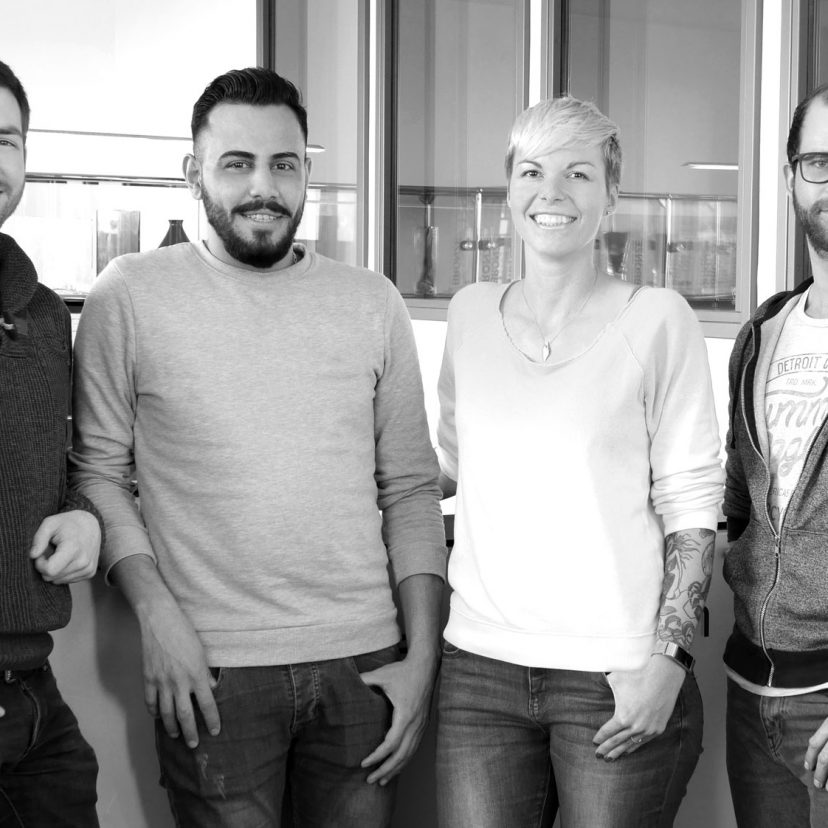The POS is changing. Online, mobile, social, cross-channel… the new possibilities seem to be taking over from offline trade and are putting stationary suppliers under pressure.
Everybody is talking about the “Millennials”, a new group of buyers with purchasing behaviour and demands that are supposedly no longer a match for our points of sale, retailers and sales ideas.
But how different is this new consumer group in reality? Are the Millennials really turning our entire approach upside down?
If we take a look back at the past, we often see incomprehension, fear and a requiem lamenting the “way things were”. Each new generation bends the rules of the elders. So why shouldn’t the Millennials do the same thing? But until now, no generation ended up changing the world in the way that was feared. So what’s different this time?
It is not the Millennials with their new self-perception that constitute the actual change; the change is due to technological progress. It allows the Shopper – not just the Millennial – to formulate new needs, expectations and make very direct demands. These needs are now coming to the surface thanks to the advanced technical possibilities.
However, this applies to all Shoppers, not just Millennials. All of them! What will this have an influence on?
1) Challenges
a) The POS in transition – what has really changed?
When we compare today’s POS with the POS as we knew it, the thing that stands out is that the Shopper is the determining factor. The Shopper is at the centre of all developments at the POS – his or her individual needs are the focal point for Marketing and Sales.
The driving force behind this development: technological progress. It gives the consumer the power and the possibility to clearly formulate and demand new expectations.
These new expectations must be taken into consideration at the POS and also on the inextricably linked Customer Journey. If they are not addressed, the consumer will punish us directly with their next purchasing act.
We must pay special attention to four current consumer expectations in order to maintain our relevance:
- EGO: The “ego”, i.e. the focus is on the individual. Nowadays, the consumer expects a personal appreciation of the individual. He or she also expects a (correct) personalisation as well as tailor-made offers and only wants to be contacted with his or her permission.
- EVERYTHING: Nobody is satisfied with half measures. The customer wants “everything”, which means a large selection, high quality, low prices and good service.
- IMMEDIATELY: The customer expects to be contacted immediately, fast transactions and short response times.
- EVERYWHERE: The offer should be available regardless of space, time and specific technologies, channels or devices.

b) Attracting the attention of the Shoppers
In addition to the expectations of the customers, the possibilities of contacting him or her have multiplied phenomenally. And with each new possibility comes the threat that the consumer will punish us if we do not make use of it.
Over the past 10 years alone, the number of advertising methods has doubled thanks to the many new digital possibilities. Digital Marketing is complementing classic advertising methods such as print, radio or TV advertisement due to the growing significance of the Internet.
Thus, the Customer Journey has become more complex.
On the one hand, this means that the buyer is bombarded with information and advertising, so it has become more difficult to stand out from the crowd. But it also means that Marketeers have to divide their advertising budget across more channels. The focus is moving towards marketing measures that generate measurable sales. There isn’t a lot of leeway for experimentation.
This complexity underlines the feeling of helplessness towards the supposedly new target group of Millennials. However, one thing is quite evident:
As the last metre before the purchase is the POS – no matter whether on or offline – it is the decisive point at which the product has to assert itself against the competition. The Customer Journey defines the necessary tools to address the consumer. It must be fine tuned, and with the POS – digital as well as analogous, it has a clear strategic direction.
2) Our Customer 4.0 toolbox
A few simple rules must be observed in order to convince the Shopper.
We have developed four questions, which anyone who wishes to successfully position their product at the POS should ask himself or herself.
a) Product relevance
Be contemporary and be relevant to the target group. This has always been the key to successful products and services. However, as a result of the high level of innovation, rapid social developments and changing customer needs, we have to ask ourselves the relevance question at increasingly shorter intervals.
This means being courageous because we all live on an exchangeable market and the pioneer is the one who reaps the rewards. Relevant products must also always be communicated in a relevant manner. What suits me as well as my product and my business model? Where and how must I be present in order to remain relevant in the mid-term?
The targeted and well thought-out use of meaningful advertising methods in-store, out-of-store and/or online not only communicate the relevance of the product but also enables an all-round satisfying Customer Journey with “Experience Points” that are perfectly aligned.
b) Trends
Keep an eye on the latest trends. In addition to the relevance of a product, it can also pay into one or more current meta trends. This increases its chance of success, and at the same time offers product design and marketing approaches that appeal to the customer needs and the spirit of the time.

Market and trend researchers have identified nine trends, which are currently influencing society. This leads to the question: Which consumer trends does my product pay into?
- Smart Convenience: Efficiency in all aspects
- Green Responsibility: Sustainably produced goods
- Value Promise 2.0.: Technology-supported savings
- Quality Moment: Rediscovery of the fun in shopping
- Stealth Health: Being healthy made easy
- 100% Transparency: Understanding origins and ingredients
- Social Networking: Using the power of social networks
- Individualisation: Tailor the shopping experience to meet MY needs
- Back to Origins: Less complexity and more authenticity
Brief digression: An example from everyday life
The beer trend Craft Beer pays into a total of 4 consumer trends and explains the current development in a very clear manner:
Green Responsibility: Sustainably produced goods
-> Sustainability can be incorporated into the product concept and the communication with images, colours and the tonality at the POS.
Quality Moment: Rediscovery of the fun in shopping
-> Shopping is fun if it is an experience. This can start with an educational Craft Beer Display.
100% Transparency: Understanding origins and ingredients.
-> Listing the ingredients and the origins can be part of the design and the presentation at the POS.
Back to Origins: Less complexity and more authenticity
-> A story about the founders, their passion or their roots can become part of the marketing & the philosophy of the brand.
c) Technology
Technology always plays a part in dealing with Millennials. The approach is simple: implement technologies where they make sense. The technologies in Marketing and at the POS have developed rapidly and sometimes seem very complex. However, selecting the appropriate technology is easily managed with two simple questions:
- Is the objective for the implementation of a technology either image or sales?
- Who does the target group consist of incl. their affinity for technology?
This way, you will only use technologies that suit the objectives, the product and the target group.
d) Implementation
Demonstrate your courage and pioneering spirit. There is no recipe for success or a guarantee that things will work out, so it makes sense to approach this phase in a playful manner and to quickly process the acquired insights.
Our recommendations quickly explained in four steps:
- Think big. Come up with 2-3 concepts with daring ideas in line with the current trends and develop them until they are ready to be realized.
- Test small. Head into a pilot project with just one partner at first in order to keep the budget and expenses at a minimum.
- Learn fast. Use the results of the pilot project as the basis for the next test.
- Optimize and repeat. Until you achieve the desired success.
Conclusion: Challenges are opportunities
The hype about Millennials clearly falls short. It isn’t this new target group that must be taken into consideration. Nowadays, the technological environment gives the consumer the power to formulate partially buried and very understandable demands towards the retailers and brands.
Although technological progress and the explosion of media present an extremely complex environment, focusing on the key factors of successful brands and products still helps. Relevance, an understanding of trends and the courage to take a playful approach to handling tests allow you to learn along with the Shopper, as he or she is also currently in the process of discovering the new opportunities.
This transition presents a great opportunity for all companies. However, it involves courage as well as the willingness to change and deviate from worn-out approaches.

